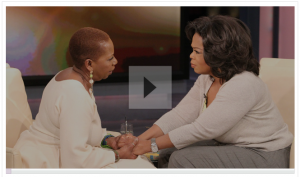Secrets of Coaching Confidence
Richard Nugent shares his thoughts and expertise in today’s guest post about:

Secrets of Coaching Confidence.
(Adapted from an article written for Fenman Training’s ‘Coach the Coach’)
I’d like you to consider a big paradigm shift from the very beginning of this article – this is that confidence is just a state. It’s not something we have or haven’t got, it’s something you do or don’t do. ‘States’ are changes in chemical and electrical activity in the body caused by alterations in focus or physiology. Many coaches, leaders and managers now understand that by changing what they are paying attention to on the inside or by getting them to move or even hold themselves differently, they can alter their ‘emotional’ state.
While we believe that top people just have it, confidence is a specific emotional state that is alien to many people in many situations. Whether this is as a result of culture (national, local or organisational), upbringing, experience or self-perception, it is clear that for many people the feeling of absolute confidence is felt in only very specific circumstances. In fact the chemical reactions experienced at these isolated times can be recreated in any context, in other words you easily train your self to be more confident more of the time.
The Physiology of Confidence
Who is the most confident person that you know? How do you know that they are confident? How would somebody who has just met them know? People who are seen as ‘confident’ will demonstrate similar characteristics, most of which can easily be replicated by anyone.
| Typical Physiological Characteristics of Confidence |
|
Being able to copy these characteristics allows more than a simple ‘mimicking’ of confidence. When anyone regularly adopts the physiology of confidence, they are encouraging their body to trigger confidence chemicals and electrical activity to stimulate a genuine state of confidence.
It’s important to remember that many people who are perceived as confident by others don’t always feel that way on the inside. Those who master confidence maintain their focus and regularly adopt the physiology of confidence, which in turn develops their confidence further.
It is vital to remember the important part that the body plays in ‘confidence’ (and indeed any state). As Dr. Candice Pert (‘Molecules of Emotion’ (Pocket Books ISBN: 0671033972, Amazon UK link), the pioneering neuroscientist highlighted, “the brain is located within and throughout the body”. In other words, our memory is quite literally in the muscle. When you discover what your own confidence physiology is, you will begin to access this state increasingly easily.
The ‘Focus’ of Confidence
So, it’s easy to see what confident people do on the outside, what about what happens on the inside? What sets these self-assured people apart from those who doubt themselves? We’ve known for some time now that internal dialogue plays a vital part in our state and how we perceive ourselves at any time. Many people, however, still allow these negative internal dialogues to continue. Their focus that is based on regular dialogue of ‘why do I always choke in the big meetings?’, ‘why do I always do this wrong?’, I’ll never be good enough to get promoted?’.
The more they repeat these (and other) low quality questions and statements, the more they drive doubt and anxiety into their neurology.
What about the focus of those who ‘have’ confidence? What do they know, do or say that allows that to operate more often from this much more resourceful state? On a fundamental level the internal dialogue will be more positive, encouraging and assured. For example ‘whatever level I present to, I’ll always adapt’ is an example of one person’s internal dialogue I’ve worked with. This wasn’t some forced positive self-talk, it was simply something that he has now said to himself so often that it became a belief.
Another useful angle to explore is that the focus of main internal representational systems (senses) changes slightly when focusing on confidence or the lack of it in certain situations. By identifying what these differences it can be relatively simple to help your people alter their strategies and increase their chances of success.
When I was first introduced to this concept, I asked a client to focus on a situation he lacked confidence about and notice his internal representations. He quickly found himself running a whole load of negative ‘strategies’. His internal pictures were all of the situation going badly. He was performing poorly and others were showing a much higher level of ability. His internal dialogue had switched to negative and critical, he was hearing himself complain, and imagining his manager pointing out his weaknesses. Finally he had a significant knot in his stomach – no surprise bearing in mind his visual and auditory focus!
I then had him focus on a future experience that he had full confidence in. Within seconds his internal picture had changed. As well as the internal pictures now showing success and the whole scenario going well, they were also brighter and clearer; mentally it was a sunny day! The auditory tape had changed too; now his internal dialogue was positive and supportive as was the imagined language of those around him. Finally, and most interestingly for me, the knot had moved. Rather than the intense feeling in his stomach, it was now an equally intense feeling in his chest – the same one he gets whenever he is excited!
This client found his key focus differences for fear and excitement and confident and unconfident. The differences between the two will vary in individual from person to person what remains the same is our (and their) ability to change the focus.
Try this experiment. It will be most effective if you can familiarise yourself with the questions, then close your eyes when doing each part of the exploration.
Think of an event in the future you feel less than confident about. Really associate into it, see it through your own eyes, as if it were happening now.
- Notice what the pictures are like.
- Are they moving or still?
- How successful are you seeing yourself being?
- What are the colours, contrast and brightness like?
- Now focus on the sounds.
- What kinds of things are you hearing, are they supportive or not?
- Notice the volume and pitch of what you can hear.
- Also notice where the sounds are coming from.
- Finally take notice of what feelings this has generated in you.
- Are they familiar?
- What would you label them as?
- Where specifically in the body are they?
- Are they moving or still? Do they have a shape?
Having noticed the pictures, sounds and feelings that you were focussing on change your focus completely for a moment before moving onto the second part. Stand up and move around, even sitting in a different position will help. When you’ve shaken off the feeling of unconfident, then you’re ready to move on the next part.
Now think of an event in the future you feel supremely confident about. Again associate into it, see it through your own eyes, as if it were happening now.
- Now notice what the pictures are like.
- Are they moving or still?
- How successful are you seeing yourself being?
- What are the colours, contrast and brightness like?
- Again move onto the sounds.
- What kinds of things are you hearing, are they supportive now?
- Notice the volume and pitch of what you can hear.
- Also notice where the sounds are coming from.
- Now take notice of what feelings this has generated in you.
- Are they familiar?
- What would you label them as?
- Where specifically in the body are they?
- Are they moving or still? Do they have a shape?
This can be an extraordinarily useful and powerful tool to access your confidence more regularly. Over time this process becomes more and more natural, even automatic allowing us to instantly access our confidence.
Is that it?
Surely those people who have suffered from neglect or criticism over a sustained period of time can’t simply ‘become’ confident by standing straighter or telling themselves how wonderful they are? Well maybe. The assumption that confidence can’t be changed or improved ‘that easily’ comes from the assumption that it is some kind of deep rooted belief. This takes us back to our starting point. Confidence is certainly affected by our beliefs – however confidence itself is a state.
Surely then it’s a long lasting embedded ‘state’? Well there is no such thing, states are always changing, electrical and chemical activity is constantly taking place in our body. It makes sense to describe states as “emergent properties” of our self-organising brains because they are always in a state of flux (Grigsby and Stevens, Neurodynamics of Personality The Guilford Press 2000). This naturally means that to remain in a state of ‘unconfident’ for more than even a few minutes we must repeat and maintain the focus and physiology that is helping us into that state. Anyone can break these patterns by simply changing our physiology or focus.
An added advantage is that it’s often unnecessary to even explore what is causing the lack of confidence. Doing so would merely reinforce feelings of inadequacy. Instead, focus on practicing the focus and physiology of the state of confidence which when mastered, can change lives forever.
About the Author/Further Resources
Richard is the M.D. of Twenty One Leadership and has coached talented people from the fields of sport and business for the last decade. Clients have credited him with everything from million pound transfers to the creation of new market leading organisations. The return on investment from his programmes stretches into the millions of Pounds, Euros and Dollars.
 Jen Waller is on a mission to support, nurture and encourage coaching skills and talents from non-coach to coach and beyond.
Jen Waller is on a mission to support, nurture and encourage coaching skills and talents from non-coach to coach and beyond.

